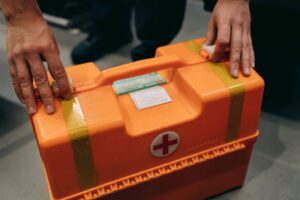
Amidst the hustle and bustle of our daily lives, it’s a frequent oversight to undervalue the critical need for safeguarding the safety and well-being of our homes. Yet, unforeseen events, ranging from natural disasters to accidents or sudden breakdowns, can transpire without warning. Preparedness for such emergencies is not merely a concern for personal safety; it is also a vital aspect of preserving our property. This article aims to underscore the significance of emergency preparedness in property maintenance, shedding light on practical steps homeowners can implement to fortify their homes against the unexpected.
Understanding the Risks
The first step towards effective emergency preparedness is understanding the potential risks your property might face. Depending on your geographical location, you may be prone to earthquakes, floods, hurricanes, wildfires, or severe storms. Additionally, consider more localized risks such as power outages, gas leaks, or plumbing failures. Identifying these risks allows you to tailor your emergency preparedness plan to address specific challenges.
Creating a Comprehensive Emergency Kit
One of the fundamental aspects of property maintenance for emergencies is the creation of a comprehensive emergency kit. This kit should include essential items such as first aid supplies, non-perishable food items, water, flashlights, batteries, a multi-tool, and important documents. Keep this kit in an easily accessible location known to all household members. Regularly check and update the contents to ensure that everything remains in good condition.
Securing the Essentials
Certain aspects of property maintenance become particularly crucial during emergencies. For example, securing heavy furniture and appliances can prevent injuries and minimize damage in the event of an earthquake or severe storm. Anchor large items such as bookshelves, water heaters, and refrigerators to the walls to prevent them from tipping over. Additionally, secure valuable items and important documents in waterproof containers to protect them from water damage.
Regular Inspection and Maintenance
Proactive property maintenance is key to reducing the risks of emergencies. Regularly inspect your property for signs of wear and tear, leaks, or potential hazards. This includes checking the roof for damaged shingles, inspecting the plumbing for leaks, and ensuring that electrical systems are up to code. Addressing these issues promptly can prevent them from escalating into emergencies.
Landscaping for Safety
Landscaping plays a significant role in property maintenance for emergencies. Trim trees and bushes regularly to prevent branches from falling during storms. Clear gutters and drains to avoid water buildup that can lead to flooding. Additionally, consider the types of plants in your garden—choosing fire-resistant plants in wildfire-prone areas, for instance, can reduce the risk of property damage.
Emergency Communication Plan
In times of crisis, communication is paramount. Establish a clear and concise emergency communication plan for your household. Ensure that all family members are aware of emergency contacts, evacuation routes, and meeting points. Keep a list of important phone numbers, including those of neighbors and local emergency services, readily available. Regularly practice emergency drills with your family to ensure everyone is familiar with the procedures.
Investing in Backup Systems
Power outages are common during emergencies, and having backup systems in place can make a significant difference. Consider investing in a generator to provide temporary power for essential appliances. Ensure that smoke detectors and carbon monoxide detectors have functioning batteries. If your property relies on a sump pump to prevent flooding, consider installing a backup battery system to keep it operational during power outages.
Insurance Coverage
While not a direct aspect of property maintenance, having adequate insurance coverage is a crucial component of emergency preparedness. Regularly review your homeowner’s insurance policy to ensure that it provides adequate coverage for potential risks in your area. Understand the terms and conditions of your policy, and consider additional coverage options if necessary. Being well-informed about your insurance coverage can expedite the recovery process after an emergency.
Community Involvement
Emergency preparedness is not solely an individual effort—it extends to the community as well. Engage with your neighbors to create a sense of community preparedness. Share information about local emergency resources, organize community drills, and establish a network of mutual support. Collaborating with neighbors can enhance the overall resilience of the community in the face of unexpected situations.
Conclusion
Emergency preparedness is an integral aspect of property maintenance that should not be overlooked. By taking proactive measures, homeowners can significantly reduce the risks associated with unexpected events and protect both their families and their properties. Regular inspections, the creation of emergency kits, securing essentials, and community involvement all contribute to a comprehensive approach to emergency preparedness. Remember, being prepared is not a one-time effort but an ongoing commitment to the safety and well-being of your home and loved ones.